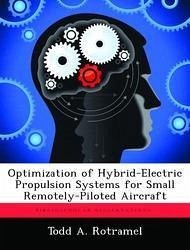Small electric-powered remotely-piloted aircraft (RPA) used by today's warfighters for intelligence, surveillance, and reconnaissance (ISR) missions lack desired endurance and loiter times, while the acoustics and thermal signatures of those configured with internal combustion engines (ICE) may make them unpractical for ISR. Outfitting RPA with parallel hybrid-electric propulsion systems (H-EPS) would meet the military's needs by combining the advantages of both systems while reducing fuel consumption and environmental impacts. An analysis tool was created, using constrained static optimization, to size the H-EPS components. Based on the RPA's required power and velocity for the endurance phase, an electric motor (EM) can be designed or selected and matched with a commercial off-the-shelf (COTS) propeller for maximum efficiency. The ICE is then sized for the RPA's required power and velocity for the cruise phase.








